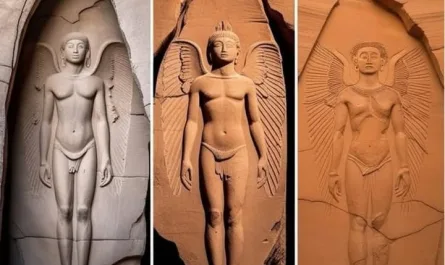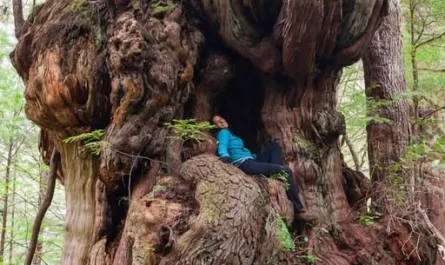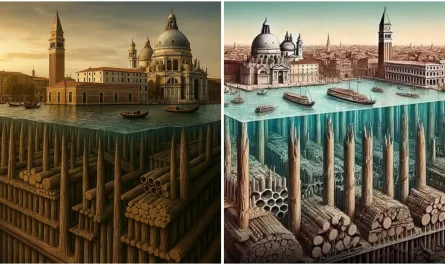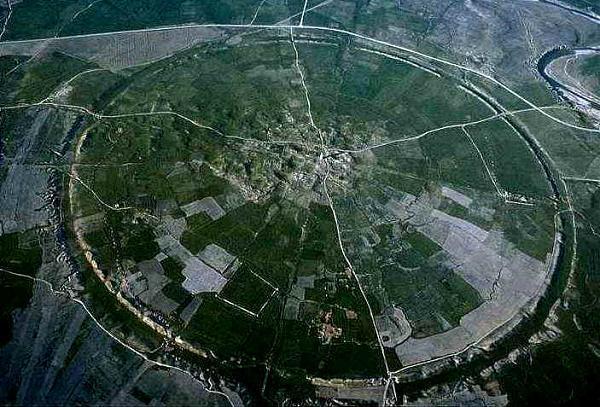Nestled in County Meath’s Boyne Valley, Newgrange is a prehistoric passage tomb dating to around 3200 BCE, making it older than Stonehenge and the Egyptian pyramids. Part of the Brú na Bóinne complex alongside Knowth and Dowth, this UNESCO World Heritage Site is celebrated for its massive circular mound, intricate megalithic art, and precise alignment with the winter solstice sunrise. Built by a Neolithic farming community, Newgrange offers a profound glimpse into the astronomical, ritualistic, and artistic sophistication of Ireland’s ancient inhabitants.
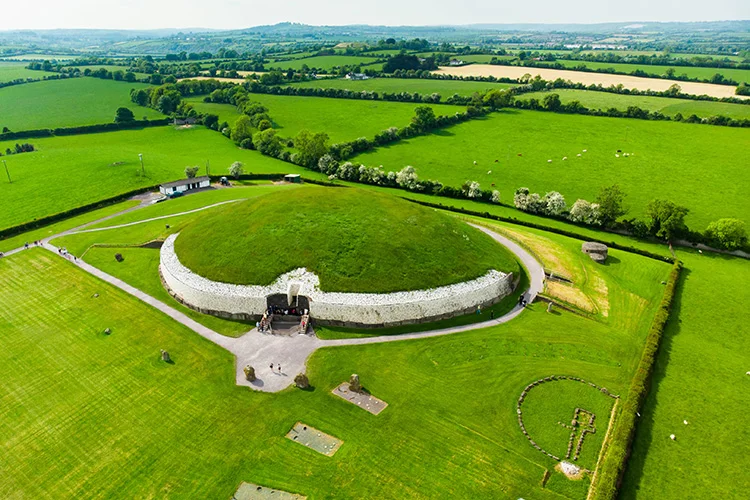
A Monumental Structure
Constructed during the Neolithic period, Newgrange is a kidney-shaped mound spanning 85 meters (279 feet) in diameter and 13.5 meters (44 feet) high, covering 1.1 acres. Its core consists of alternating layers of earth, clay, and stones, supported by a retaining wall of 97 kerbstones, some weighing up to 5 tons. Around 20 of these stones are adorned with intricate megalithic art—spirals, lozenges, and chevrons—etched using flint tools, showcasing the builders’ artistic skill. The mound encloses a 19-meter-long passage leading to a cruciform chamber with a corbelled roof, built without mortar yet watertight, a testament to Neolithic engineering.
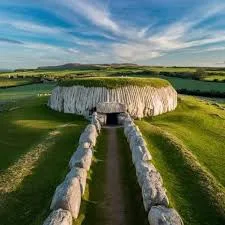
The entrance features a large, decorated stone and a unique roof box—a rectangular opening above the passage. This design, discovered during excavations led by Michael J. O’Kelly in the 1960s, is key to Newgrange’s astronomical significance.
The Winter Solstice Alignment
Newgrange’s most iconic feature is its precise alignment with the winter solstice sunrise, occurring around December 21. For about 17 minutes each year, sunlight enters through the roof box, travels down the passage, and illuminates the central chamber, bathing its stone basin in a golden glow. This phenomenon, first observed in modern times in 1967, suggests the builders possessed advanced astronomical knowledge, likely tracking solar cycles to mark the year’s shortest day—a time of renewal and ritual significance.
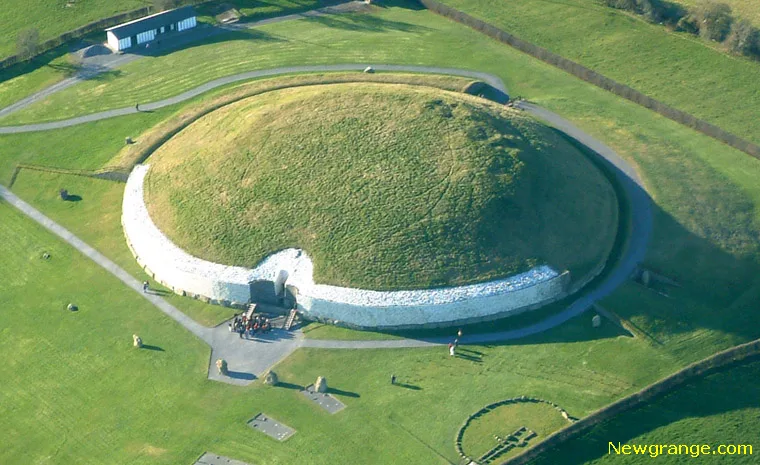
The alignment required meticulous planning: the passage slopes upward to catch the low winter sun, and the roof box’s narrow slit ensures only solstice light penetrates deeply. This precision, achieved without written records or metal tools, reflects a deep understanding of the cosmos, possibly tied to agricultural or spiritual cycles. The chamber, with its carved triple spirals and evidence of cremated remains, likely served as a ceremonial or burial site, connecting the living to ancestors and celestial rhythms.
Cultural and Historical Significance
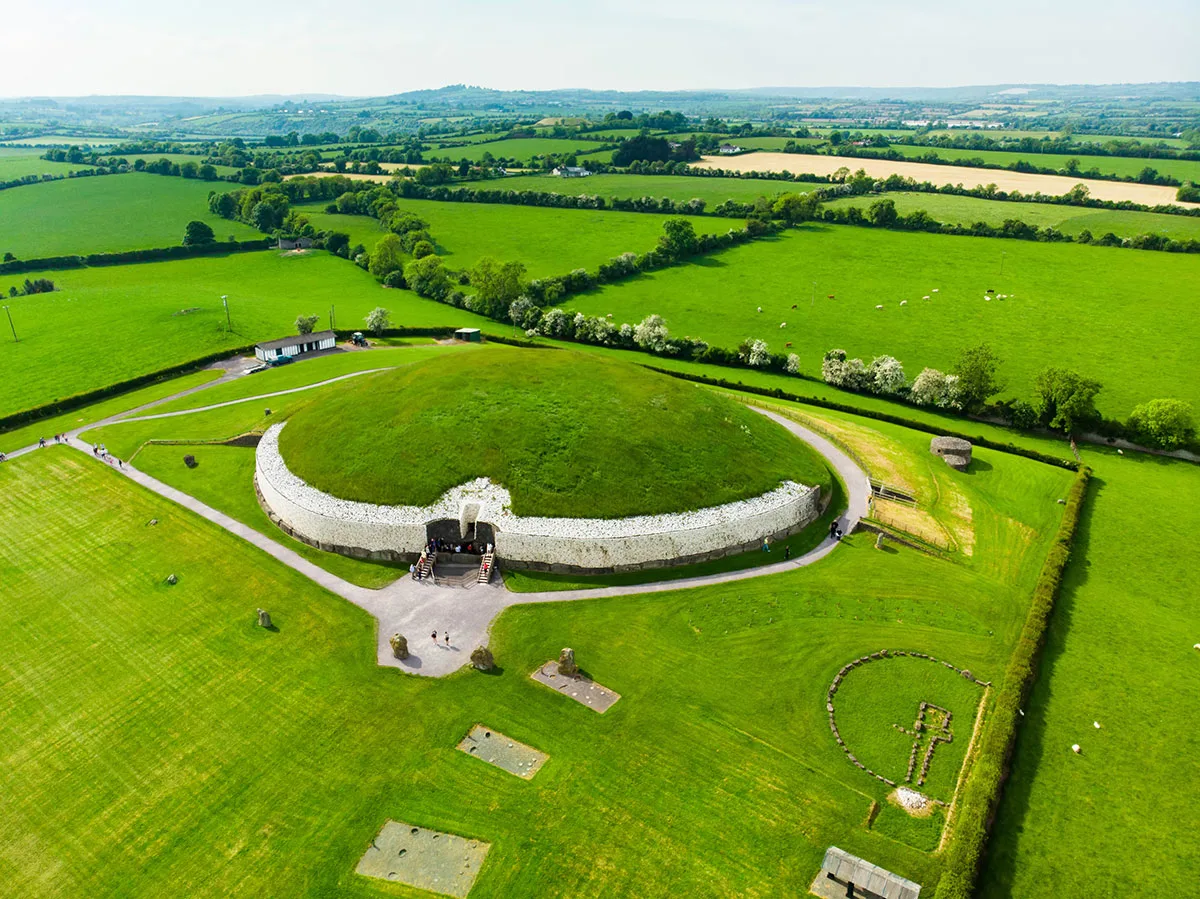
Newgrange, built by a Neolithic community around 3200–3100 BCE, predates the Celtic Iron Age and is not a “Celtic” site, despite later myths linking it to figures like the Dagda. Its construction, requiring an estimated 400,000 tons of material and 80,000 worker-hours, suggests a highly organized society with surplus resources. The megalithic art, unique to the Boyne Valley, may symbolize cycles of life, death, or celestial patterns, though its exact meaning remains speculative.
As part of Brú na Bóinne, a UNESCO World Heritage Site since 1993, Newgrange joins Knowth and Dowth in showcasing Ireland’s Neolithic heritage. Knowth, with its 127 kerbstones and dual passages, and Dowth, aligned with the winter solstice sunset, complement Newgrange’s grandeur. The complex’s 40+ satellite tombs indicate a regional spiritual hub, possibly used for centuries.

Modern Relevance and Lessons
Newgrange’s enduring legacy offers lessons in ingenuity and connection to nature, echoing the resourcefulness seen in historical practices like the Dahomey Amazons’ cornrow maps. Its builders, like the Amazons, used available tools—flint, community labor, and observation—to create something extraordinary, teaching us:
Astronomical Awareness: Newgrange’s solstice alignment inspires modern appreciation for sustainable practices tied to natural cycles, such as solar energy or seasonal agriculture.
Cultural Preservation: Protecting sites like Newgrange, visited by 200,000 annually via the Brú na Bóinne Visitor Centre, underscores the need to safeguard heritage for education and inspiration.

Community Collaboration: The monument’s scale reflects collective effort, encouraging teamwork in modern projects, from community initiatives to scientific endeavors.
A Timeless Wonder
Today, Newgrange captivates visitors, with access limited to guided tours and a lottery for the solstice event (50 spots from 20,000+ applicants yearly). Its preservation, aided by 1960s–1970s restoration, ensures its stone carvings and chamber endure. The solstice light, streaming through the roof box, remains a powerful symbol of humanity’s ancient bond with the cosmos, inviting us to marvel at a 5,200-year-old masterpiece that still shines brightly in Ireland’s historical tapestry.
